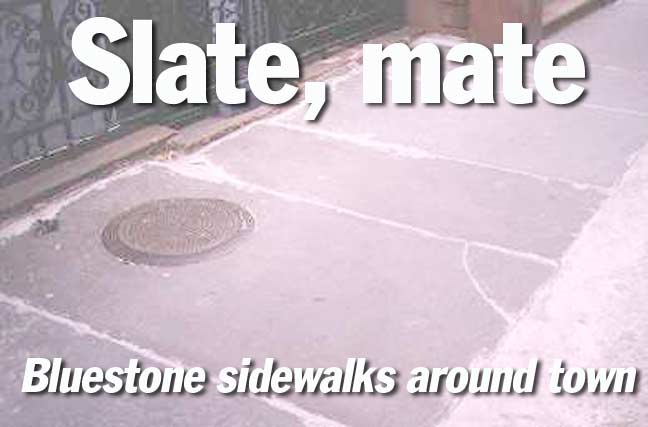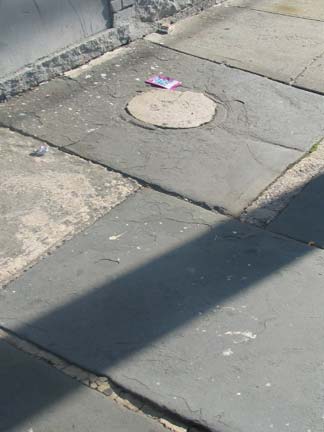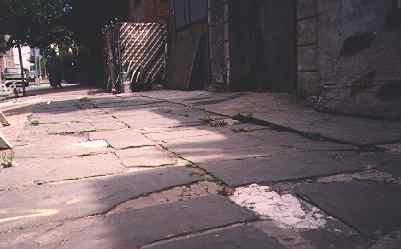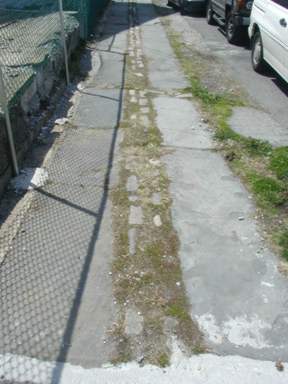Before poured concrete became the de rigueur material for New York City sidewalks, they boasted unique slate bluestone plates that made a distinct hollow noise when trod upon.
Older parts of town can still be recognized, in part, by the presence of such distinct and handsome bluestone slate sidewalks, as we’ll see on this page…
Kane Street, Cobble Hill
Elm Avenue, Flushing, Queens.
Parts of Flushing were developed long before the surrounding areas of Fresh Meadows and Auburndale. This is near the small enclave known as Waldheim, developed from 1903-1916 by the Wallace-Appleton Company, with streets named for plants from Ash to Rose. The name Waldheim fell out of favor after World War I.
Murray Street, Flushing. Uneven slate sidewalks show their esthetic superiority when shown along the much more ordered concrete sidewalk.
Astoria Village, Queens. Slate sidewalks contrast nicely with Belgian-blocked driveways.
Astoria Village is under assault by developers, who would like to rid the Village of its centuries-old homes in favor of cookie cutter new developments.
Coal-chute cover on a slate sidewalk, Greenwich Village
Filled-in coal chute cover, Whitestone
Chipped slate sidewalk in need of repair, Wythe Avenue, Williamsburg
Unusual slate plates on Hull Avenue in Maspeth
State Street, Brooklyn Heights
Step on Cherry Avenue in Flushing with remaining slate remnant. This hearkens to the era when unpaved streets necessitated the occasional block, or step, to be placed at the curb so passngers could alight without soiling shoes.
7/13/02












